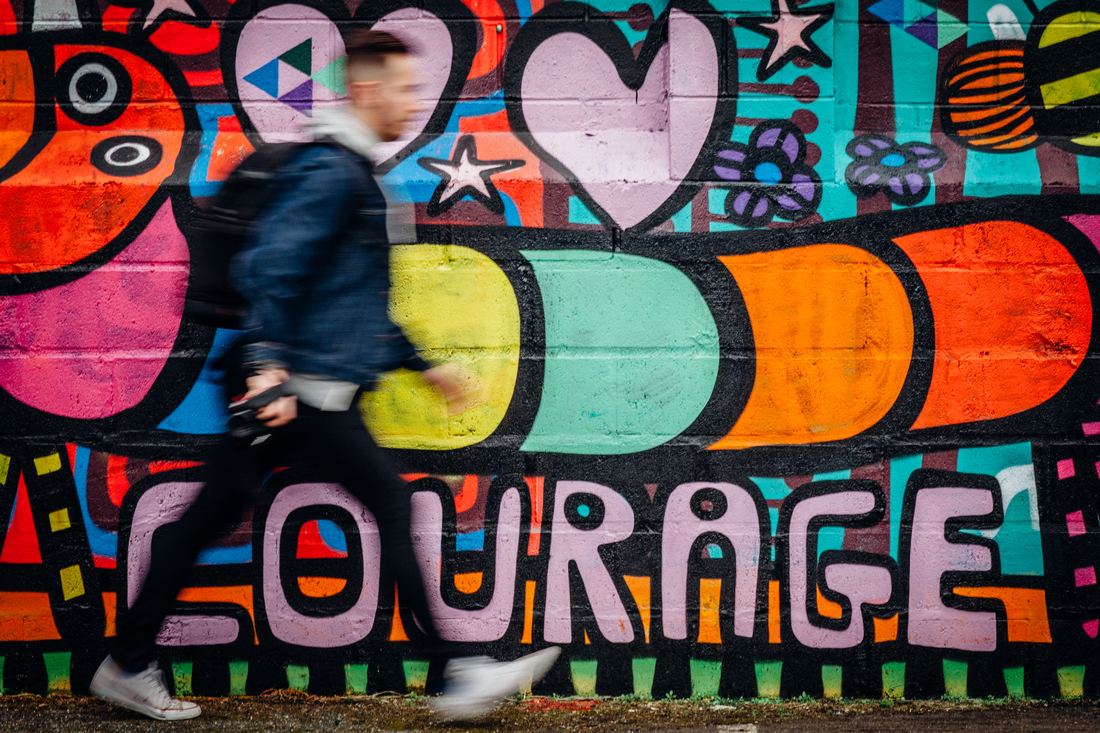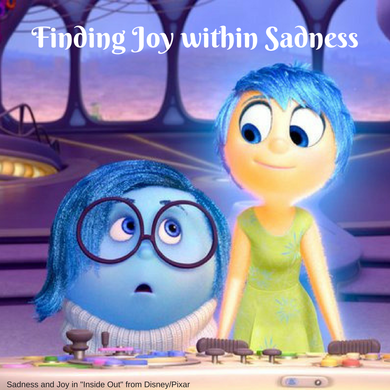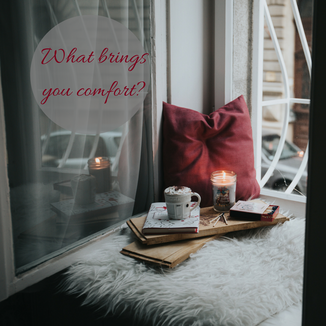 The mental picture I have for courage is someone doing something grand - like saving a life or fighting fires. Merriam-Webster defines courage as “mental or moral strength to venture, persevere, and withstand danger, fear, or difficulty.” The “or” in this definition sticks out to me. Courage is not just about life-and-death dangers.
Brené Brown addresses courage in her book “The Gifts of Imperfection” making the argument that courage at its root is about “speaking honestly and openly about who we are, about what we’re feeling, and about our experiences (good and bad)…Ordinary courage is about putting our vulnerability on the line” (12-13). My reflexive reaction is to deny courage as a description of myself. If I only conceptualize courage as life-and-death circumstances. But, if I adopt Brené Brown’s conceptualization, I have to courageously accept and acknowledge my own courage. I have spoken honestly and openly about who I am, maybe not all the time, but I have. And if I tease apart the Merriam-Webster definition, I have persevered through difficulties. If we all take a moment, we all have spoken honestly at some point in our lives, and have all persevered through difficulties. I think Brené Brown is right - courage happens every day. I hope we can all learn to acknowledge our own courage and the courage in others.
0 Comments
This topic has been in the back of my mind for a while, particularly as it is represented in a scene from "Inside Out". The character Bing Bong is sad because his rocket gets dumped and the film shows Joy and Sadness interacting with Bing Bong in different ways. (If you have not seen Inside Out, I highly recommend it!).
Joy tries to cheer up Bing Bong with silly faces, positive thinking, and distraction. But these gestures, as well intentioned as they might be, do not do much for Bing Bong. Sadness on the otherhand, sits down and empathizes with Bing Bong. Sadness and Bing Bong share a moment, some tears, and a hug and then Bing Bong is able to move on. Joy had a clear objective – make Bing Bong feel better. It is hard to say if Sadness had an objective when she approached Bing Bong. But regardless of an objective, Sadness helped Bing Bong feel better. This scene is loaded for me. For one thing, it reminds me about the often counterproductive act of cheering someone up or cheering myself up for that matter. Often when I am sad or frustrated I will tell myself things like, “think of positive memories,” “remember the things that you are grateful for,” or “it could always be worse.” Though these thoughts are not in and of themselves bad thoughts, often times I end up more frustrated with myself that these positive thoughts do not make me feel better. Inside Out captures this dynamic so well with Joy’s actions toward Bing Bong and her frustration with Bing Bong and Sadness. This scene also reminds me that compassion is far more helpful than silly faces and distraction. (Though there is a time and a place for silly faces and distraction). The character Sadness wants nothing from Bing Bong. She does not need him to feel better. She notices that he is upset, and sits down next to him. It is a beautiful scene. Sadness sitting with and feeling with Bing Bong. Translating this outside of an animated film, learning to sit with and feel my own sadness and frustration has been so important. When I am able to create space within myself and show myself compassion, whatever I am feeling might intensify initially, but soon thereafter I am able to breathe a bit easier. Self-compassion is by no means easy, but this scene and concept remind me of the importance of compassion and that of self-compassion. Finding joy within sadness? My thought is that being compassionate and making space for sadness (or whatever emotion you might avoid) will bring about deeper relationships with others and yourself, and that is a joyous thing. We all need comfort – whether it is after a long hard day, after an anxiety attack, or on a cold and lonely day – comfort is appreciated. Of course different things bring different people comfort. When I think of comfort my immediate associations are related to soft and warm things like fuzzy blankets and pets. As I tried to come up with additional things to add to a comfort list I had trouble defining the word comfort without using the word comfort.
Merriam-Webster defines comfort in two ways: (1) “to give strength and hope” and (2) “to ease the grief or trouble of.” I really like these definitions. It not only articulates the soothing quality of things on my comfort list, but also adds empowerment. Some people are fortunate enough to be surrounded by comfort - people, places, and things. However, comfort might be harder to come by for others. In moments of distress I find that it can be more difficult to identify things that could provide comfort. So by creating a comfort list, soothing and empowering things can be at my fingertips when most needed. For me, my comfort go-to’s include: tea, cute animal pictures, warm blankets, fuzzy socks, chatting with friends, music, candles, coloring, and I’ll continue adding to the list because sometimes things on the list work and sometimes things on the list don’t. What brings you comfort? New Year. New years are interesting. There tends to be a lot of hype about New Year’s Eve. People ask what you are going to do New Year’s Eve – do something to celebrate the end of one year, and the coming of a new year. I suppose it is a way to put the past behind, and look forward to what is ahead. But that which is ahead may not always be exciting or exhilarating for people. Or leaving the past behind might feel sad and bittersweet. I suppose it is a way to unite humankind. People all over the world acknowledge this shift and many set resolutions for the new year.
The thing is, every day we leave yesterday behind, and look ahead to today and tomorrow. Setting intentions for a new year can be meaningful and impactful. But what if we set an intention each day, big or small? Perhaps setting daily intentions is a bit too much – perhaps weekly or monthly or quarterly intentions could be helpful. If you so choose to start setting intentions, one way is to make them small and concrete. Often times we set lofty goals. Big goals are not a bad thing, but they can become overwhelming. Breaking down large goals into small and concrete steps makes goals more feasible. And then when we accomplish one of the small and concrete steps, we feel all the more motivated to set another small and detailed step. For example, one of my intentions is to blog more, which feels big. Thoughts in my head include: how will I come up with topics, what will I write about, and the thoughts keep turning. But I will start with this post, and will brainstorm more ideas today and hopefully come up with 3 other topics for the rest of January. So to all of you, Happy New Day! |
AuthorA therapist in private practice that loves drinking tea, looking at cute and fluffy animals, and often overthinks. CategoriesArchives
February 2018
|





 RSS Feed
RSS Feed
